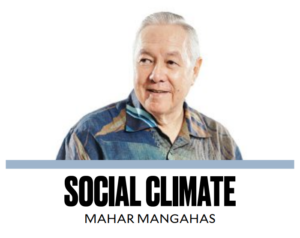In the late 1980s, the 1990s, and the early 2000s, HIV/AIDS loomed large in the Filipino public’s consciousness. News of this dread disease, its causes, cures, and consequences filled all forms of media, even the nascent internet. Public fora, interviews with health authorities and activists, even movies featuring the stories of people living with (and dying of) HIV/AIDS, brought the largely sexually transmitted disease to the forefront of Filipinos’ concerns. Or so it seemed.
Today, HIV/AIDS produces hardly a blip in the radar of the nation’s awareness. Perhaps it was a case of “AIDS fatigue,” or the emergence of other diseases of public concern such as SARS, MERS, Zika, monkeypox, and of course COVID-19, which we are still battling. Repeated public alarms and private anguish seem to have blunted people’s fears about diseases that still linger and cause harm, in much the same way that many Filipinos today ignore the reality of TB or tuberculosis, smallpox, or polio that continue to afflict our people. We may have lowered our vigilance against HIV/AIDS, but it doesn’t mean the disease has stopped producing new infections or killing those afflicted.
Alarming indeed are recent findings of the Department of Health (DOH) that there were 1,454 new cases of HIV infection in January. Even more alarming is the news that 86 of them involved young people aged 19 years and below. The report said that 79 of them were adolescents aged 10 to 19, with seven of them children below 10 years old. The younger children are believed to have acquired the virus through “vertical transmission,” or infections passed on from mother to child during childbirth. The latest figures point to an average of 46 new cases reported every day in January, said the DOH. This brings the total number of reported HIV cases since 1984 to 110,736, while the number of deaths due to HIV/AIDS now stands at 6,383.
This seems a blessedly low number compared to the toll of, say, COVID-19. But a key reason may be the availability of proven treatment options such as anti-retroviral drugs and condom use. Still, the growing number of teens succumbing to HIV infection points to a yawning gap between translating awareness and initiating behavioral changes. The rising number of HIV among adolescents doesn’t augur well for their future, as they face years of expensive treatments as well as psychological and emotional trauma, including depression, anxiety, ostracism, and hostility.
The problem begins with the issue of awareness. A 2021 Young Adult Fertility and Sexuality Study (YAFS5) found that 76 percent of young Filipinos aged 15 to 24 have heard of HIV and/or AIDS, a 19 percent drop from 1994 when awareness stood at 95 percent. This follows on the heels of a progressive decline in awareness of the disease among Filipino youth, with the decline appearing to be picking up pace. But it is not enough to stop at efforts to raise awareness of HIV/AIDS. The quality of information and knowing what to do with it are also crucial to preventing new transmissions. Among those who have heard of HIV/AIDS, the youth study found that only 19 percent or one in five youth had “comprehensive knowledge” of the virus, based on five standardized statements consisting of a mix of correct information and misconceptions about it. The study’s other findings: more than half or 52 percent of youth incorrectly believed that a person could get HIV by sharing food with someone who is infected; about two in five, on the other hand, did not believe that a healthy-looking person can have HIV, while some 35 percent also did not believe that a person can reduce the risk of infection by using a condom during sex. YAFS5 data also showed a low level of condom use during high-risk sexual activities, such as transactional and casual sex among male youth. Indeed, the results of the January survey found that 98 percent of the new cases resulted from unprotected sex, with men having sex with other men as the predominant source of sexual transmission.
The work that lies before health authorities and supporters such as legislators and local government leaders, is to step up efforts to raise awareness—quality awareness—among young people regarding HIV/AIDS. The Department of Education (DepEd) is especially crucial in providing information, guidance, and reassurance to young people still exploring their sexuality. A good place to start is the Comprehensive Sexuality Education (CSE) K-to-12 Curriculum Guide that the DepEd rolled out in 2018 starting with Regions 1, 7, and 11, which might however need to be reviewed and updated. As one reproductive health expert noted, the CSE’s framework should go beyond abstinence and toward access to condoms and contraceptives. The CSE’s core topic on “Sexuality and Sexual Behaviors” also seems tailor-made to provide a deeper understanding of HIV/AIDS among adolescents, and how sexually responsible actions can help prevent the disease.


